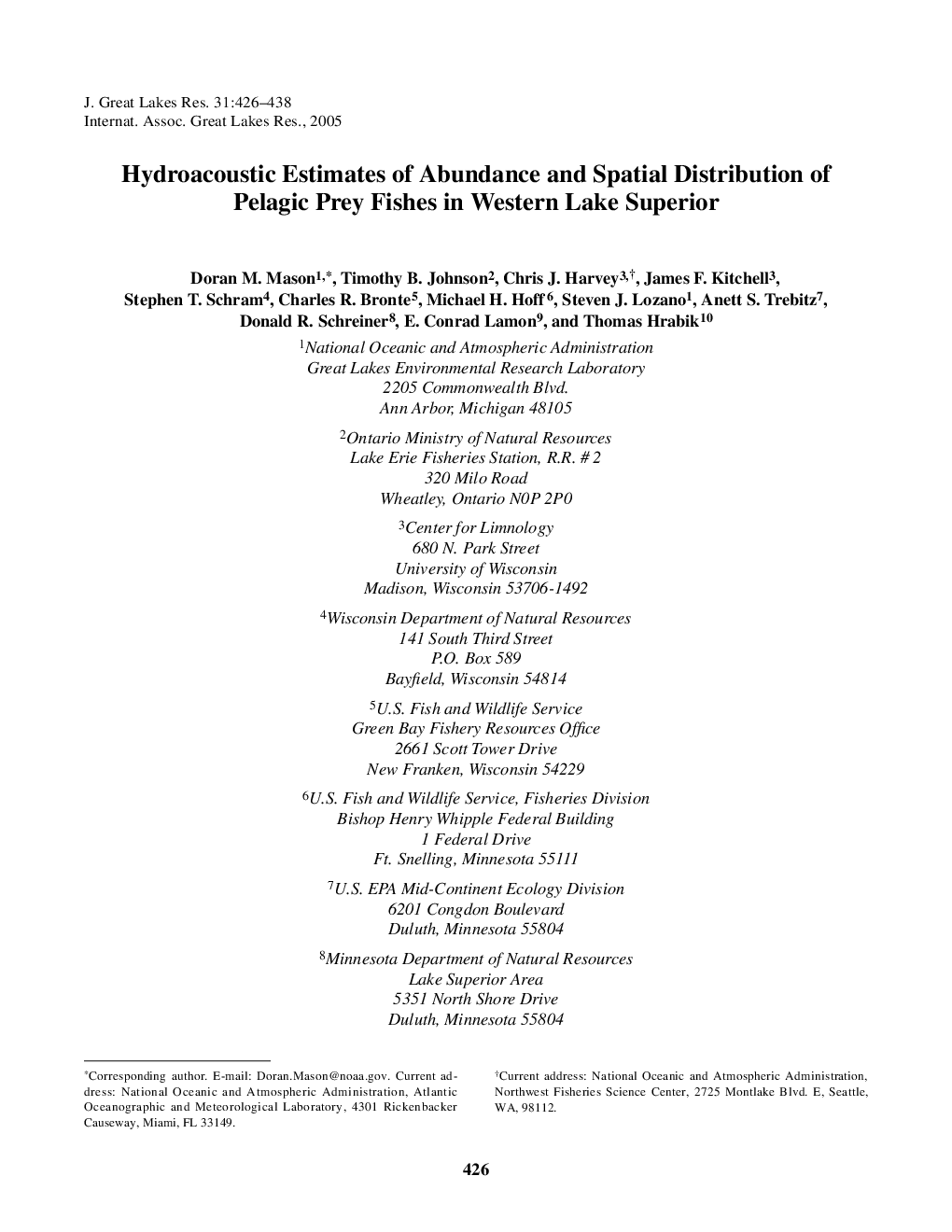| Article ID | Journal | Published Year | Pages | File Type |
|---|---|---|---|---|
| 9450139 | Journal of Great Lakes Research | 2005 | 13 Pages |
Abstract
Lake herring (Coregonus artedi) and rainbow smelt (Osmerus mordax) are a valuable prey resource for the recovering lake trout (Salvelinus namaycush) in Lake Superior. However, prey biomass may be insufficient to support the current predator demand. In August 1997, we assessed the abundance and spatial distribution of pelagic coregonines and rainbow smelt in western Lake Superior by combining a 120 kHz split beam acoustics system with midwater trawls. Coregonines comprised the majority of the midwater trawl catches and the length distributions for trawl caught fish coincided with estimated sizes of acoustic targets. Overall mean pelagic prey fish biomass was 15.56 kg haâ1 with the greatest fish biomass occurring in the Apostle Islands region (27.98 kg haâ1), followed by the Duluth Minnesota region (20.22 kg haâ1), and with the lowest biomass occurring in the open waters of western Lake Superior (9.46 kg haâ1). Biomass estimates from hydroacoustics were typically 2-134 times greater than estimates derived from spring bottom trawl surveys. Prey fish biomass for Lake Superior is about order of magnitude less than acoustic estimates for Lakes Michigan and Ontario. Discrepancies observed between bioenergetics-based estimates of predator consumption of coregonines and earlier coregonine biomass estimates may be accounted for by our hydroacoustic estimates.
Related Topics
Physical Sciences and Engineering
Earth and Planetary Sciences
Earth and Planetary Sciences (General)
Authors
Doran M. Mason, Timothy B. Johnson, Chris J. Harvey, James F. Kitchell, Stephen T. Schram, Charles R. Bronte, Michael H. Hoff, Steven J. Lozano, Anett S. Trebitz, Donald R. Schreiner, E. Conrad Lamon, Thomas Hrabik,
